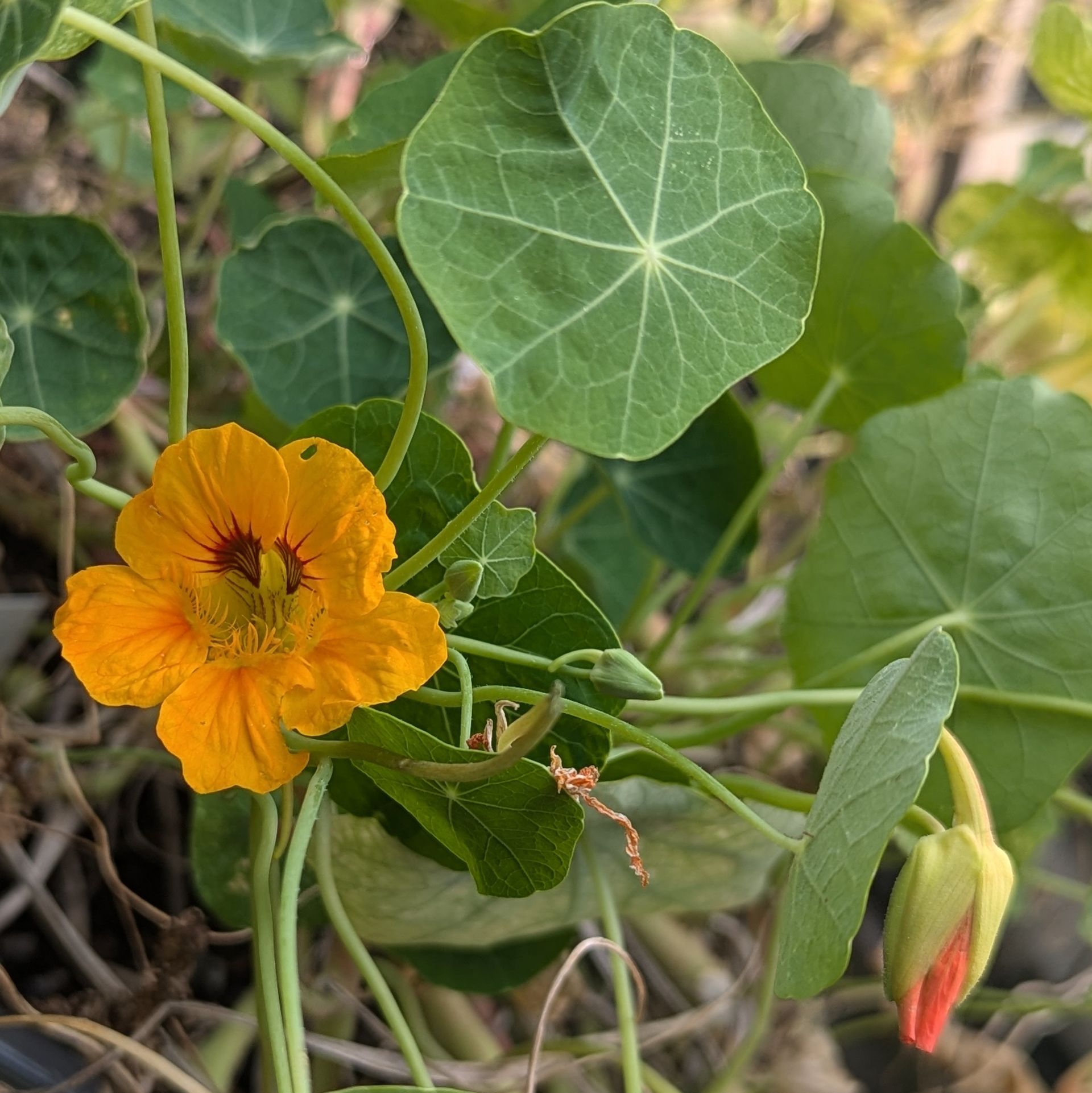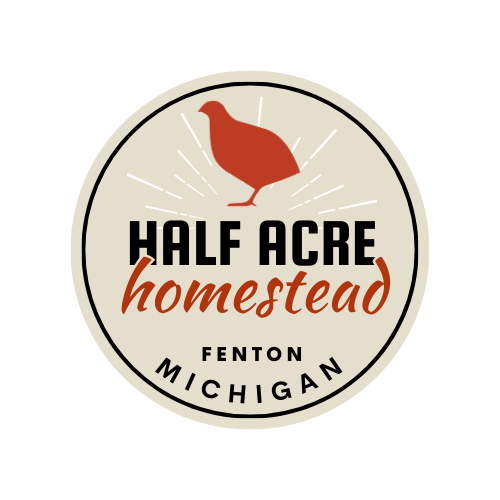Nasturtium
A Vibrant and Versatile Garden Favorite

Nasturtiums (Tropaeolum spp.) are vibrant, easy-to-grow plants that bring a splash of color to gardens and plates alike. With their distinctive round leaves and bright, funnel-shaped flowers in shades of red, orange, yellow, and cream, they are loved by gardeners and chefs. Native to South and Central America, nasturtiums thrive in various conditions, often growing as annuals in temperate regions.
Edibility and Culinary Uses
Nasturtiums are not only ornamental but also edible. While I think they're more commonly grown for their looks they're also tasty. Both the leaves and flowers have a peppery flavor, similar to arugula, making them a popular addition to salads, sandwiches, and garnishes. The immature seed pods can be pickled and used as a substitute for capers. Rich in vitamins A and C, nasturtium adds both nutrition and a visual pop to dishes.
Benefits in the Garden
In the garden, nasturtiums serve as excellent companion plants. They attract beneficial insects like bees and repel pests such as aphids and squash bugs. Additionally, nasturtiums can act as a "trap crop," luring pests away from more vulnerable plants.
Medicinal and Historical Use
Historically, nasturtiums have been used for their medicinal properties, particularly for respiratory and urinary tract infections. The plant contains natural compounds with antimicrobial and anti-inflammatory effects. Herbalists have long valued it for boosting the immune system and promoting wound healing.
Low Maintenance and High Reward
Nasturtiums are easy to grow for beginner gardeners, as they require little care and can grow in poor soil. Whether trailing over the edges of containers, sprawling as ground cover, or climbing trellises, they pretty and bring cheer to any space with their bright colors and lush foliage.
With its vibrant blooms, edible leaves and flowers, and pest-repellent qualities, nasturtium is a versatile plant that enriches gardens and kitchens alike.


